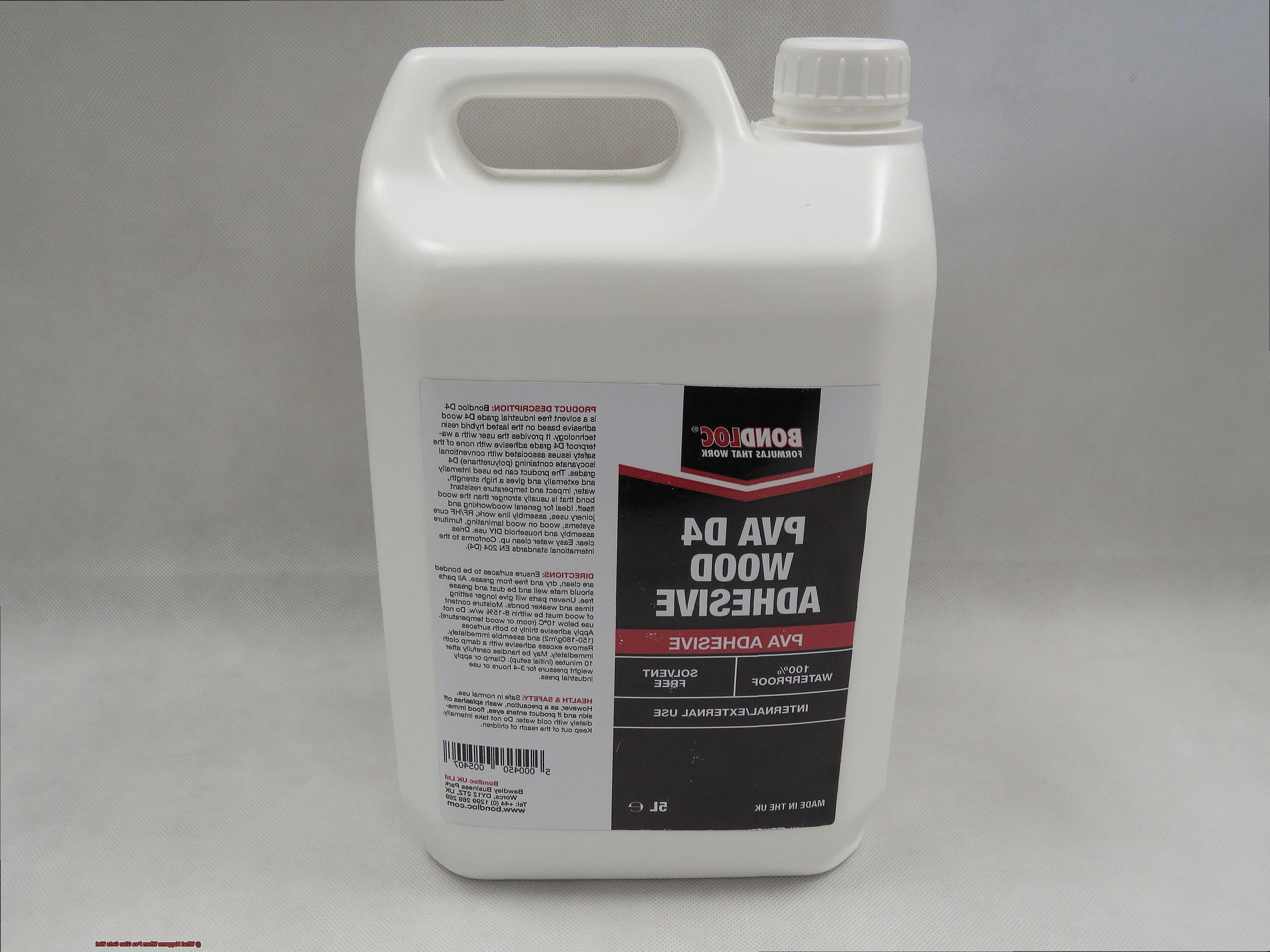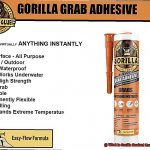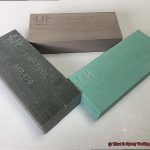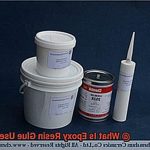Are you tired of constantly struggling to find the perfect adhesive for your plastic projects? Or maybe you’re just in a bind after accidentally breaking something important made out of plastic. Fear not, because we’re here to settle the age-old debate on what reigns supreme in terms of strength: epoxy or Gorilla Glue on plastic.
Epoxy and Gorilla Glue are two of the most popular adhesive options for plastic materials, but how do they stack up against each other when it comes to bonding power? In this blog post, we’ll take a deep dive into the properties of each adhesive and compare their effectiveness at creating strong bonds between plastic surfaces.
We’ll cover everything from drying time and curing process to their ability to withstand pressure and impact. By the end of this post, you’ll have a clear understanding of which adhesive is the ultimate champion in the battle between these two heavyweights.
So sit back, relax, and get ready to learn all about which adhesive will come out on top as we explore the strength and reliability of epoxy versus Gorilla Glue on plastic.
The Differences between Epoxy and Gorilla Glue
Contents
As a connoisseur of adhesives, it’s essential to comprehend the differences between epoxy and Gorilla Glue, particularly in regard to bonding plastic materials. These two glues are known for their exceptional strength and durability, but they have their unique properties that make them suitable for different applications.
One of the most notable distinctions between these two adhesives is their curing time. Epoxy typically takes longer to cure than Gorilla Glue, which can set in as little as 10-15 minutes. However, epoxy is renowned for its unwavering strength and durability, making it an optimal choice for bonding plastics and other materials that require a robust hold. Gorilla Glue may not be as durable over the long term as epoxy, but it’s perfect for quick repairs or projects where time is of the essence.
When it comes to bonding plastic specifically, both epoxy and Gorilla Glue can be effective depending on the type of plastic being bonded. Epoxy tends to work well with rigid plastics like PVC or ABS, while Gorilla Glue may be better suited for bonding flexible plastics like polypropylene or polyethylene. Thus, it’s crucial to consider the specific application before choosing between the two adhesives.
In terms of application, epoxy requires mixing and special equipment, while Gorilla Glue is often easier to apply due to its single-component formula. However, this also means that Gorilla Glue can be messier and harder to control during application.
Aside from curing time and application method, there are other differences between epoxy and Gorilla Glue that are worth noting. For instance, epoxy can resist high temperatures and chemicals better than Gorilla Glue. Additionally, Gorilla Glue expands as it cures, which can cause issues if you’re working with precise measurements or tight spaces.
Strength of the Bond
When it comes to bonding plastic materials, the strength of the bond is a vital factor to consider. As a glue aficionado, you know that not all adhesives are created equal. In this post, we’ll explore two popular adhesives: epoxy and Gorilla Glue, and delve into the factors that determine the strength of the bond between them on plastic surfaces.
Epoxy is a two-part adhesive consisting of a resin and a hardener. When mixed together, they create a potent bond that can endure high stress and strain. This adhesive is known for its exceptional durability and resistance to water, chemicals, and heat. If you’re bonding rigid plastics like PVC or ABS, epoxy is your best bet for an adhesive that can provide superior strength and durability.
On the other hand, Gorilla Glue is a one-part adhesive that expands as it dries, forming a robust bond capable of holding up to 1000 pounds per square inch (psi) of pressure. This adhesive is waterproof and heat-resistant, making it an ideal choice for outdoor applications. However, its expanding nature during curing can be a concern when bonding plastic surfaces.
So, which adhesive should you choose when bonding plastic surfaces? It depends on various factors such as the type of plastic being bonded and the application at hand. For rigid plastics like PVC or ABS in high-stress applications like automotive or aerospace industries, epoxy is recommended for its unwavering power. On the other hand, for flexible plastics like polypropylene or polyethylene in low-stress applications like DIY projects or household repairs, Gorilla Glue can be an excellent choice.
Furthermore, understanding the stress level of the application can help you make the best decision. If you’re bonding plastic materials in high-stress applications like automotive or aerospace industries where there are high levels of stress and strain, epoxy is recommended for its exceptional strength and durability. However, if you’re bonding plastic materials in low-stress applications like DIY projects or household repairs, Gorilla Glue can be a suitable option.
Advantages of Using Epoxy
This two-part adhesive is a superior choice over Gorilla Glue when it comes to bonding plastic due to its exceptional advantages.
Epoxy delivers unmatched strength, thanks to its two-part formula that creates a bond much stronger than Gorilla Glue. Its superior bonding strength makes it the go-to choice for industrial applications where durability is essential. Even for DIY projects, you want an adhesive that will hold up over time, and epoxy delivers.
The versatility of epoxy is another huge advantage. It can be used on a wide range of materials, including plastics, metals, wood, and ceramics, making it an ideal choice for multiple applications. Plus, it can fill gaps and cracks in plastic surfaces, providing a seamless finish that looks like new.
Resistance to water, chemicals, and heat are other excellent benefits of using epoxy. It can withstand harsh environments and high temperatures without losing its bond strength. In contrast, Gorilla Glue may start to break down under similar conditions. Epoxy’s ability to resist harsh conditions makes it perfect for any application where these factors are essential.
Lastly, epoxy can be sanded and painted after curing. You can achieve a seamless finish that matches the rest of the surface easily. This feature makes it perfect for repairs or projects where aesthetics are important.
Advantages of Using Gorilla Glue
Look no further than Gorilla Glue. As an expert in the adhesive industry, I can attest that this polyurethane-based adhesive is a game-changer when it comes to bonding different materials. Here are just a few of the many advantages of using Gorilla Glue:
Versatile and Water-Resistant:
One of the most significant benefits of using Gorilla Glue is its ability to create a bond that is water-resistant and can withstand harsh environments or extreme temperatures. This feature makes it ideal for outdoor applications or for projects that require a durable and long-lasting bond. Additionally, it can bond various materials such as wood, metal, ceramic, and even plastic.
Expands as it Dries:
Gorilla Glue expands as it dries, which allows it to fill gaps or irregular surfaces between the plastic parts being bonded. This feature ensures a tight and secure hold, even on uneven surfaces.
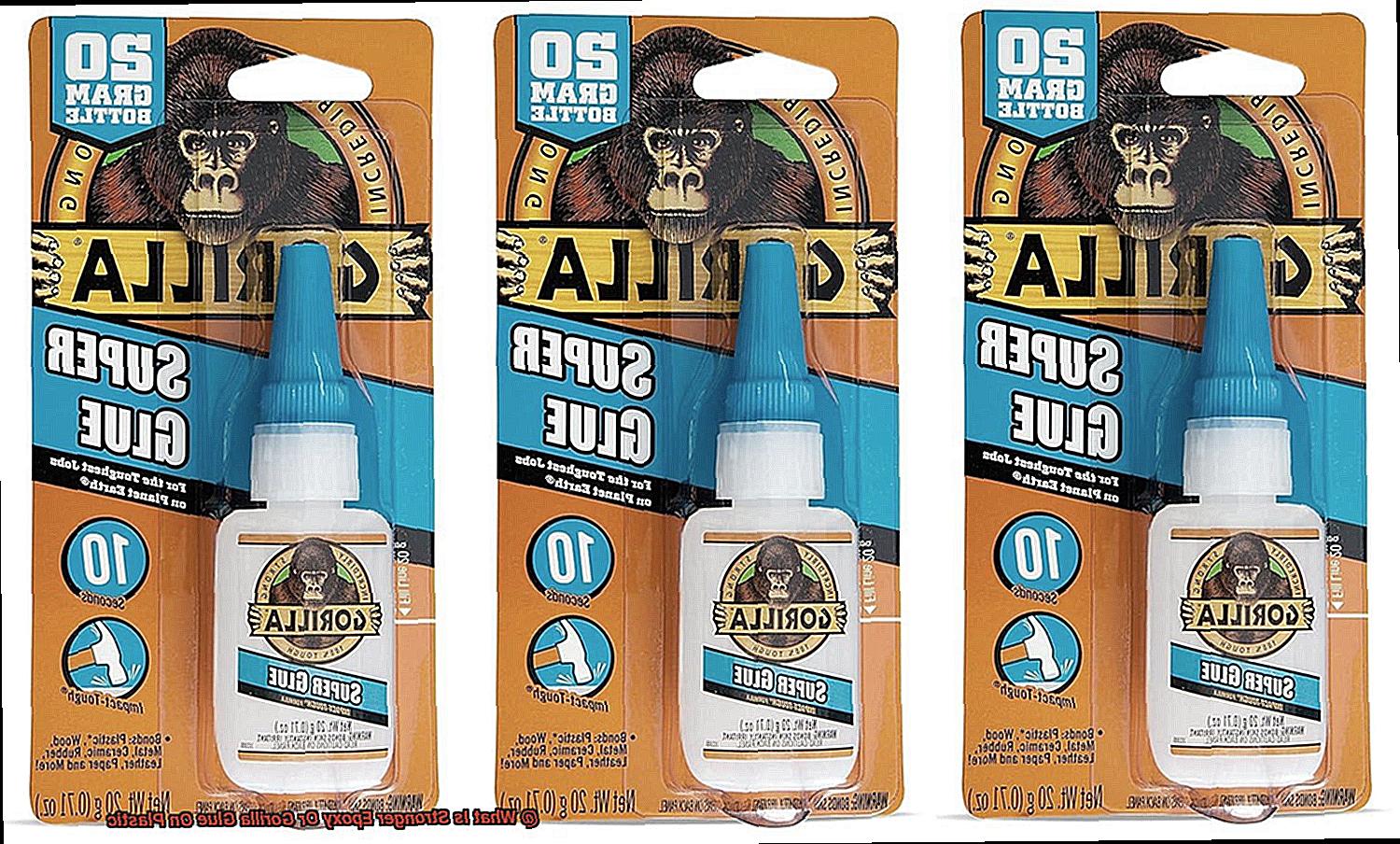
Fast-Drying Time:
Another advantage of Gorilla Glue is its fast-drying time. Its quick assembly reduces the waiting time for glue to set, which is especially useful for DIY projects or home repairs where time is of the essence.
High Strength-to-Weight Ratio:
Gorilla Glue also has an impressive strength-to-weight ratio. A small amount of glue can hold a lot of weight, making it an excellent choice for projects where weight and load-bearing capacity are important factors to consider.
Easy to Use:
Finally, Gorilla Glue is easy to use and apply. Its one-part formula eliminates the need for mixing and its precision applicator allows for easy and precise application without any mess.
Factors Affecting the Strength of the Bond
Firstly, surface preparation is key. Any oil, grease, or dust on the surface of the plastic can weaken the bond. Ensuring that the surface is thoroughly cleaned and dried before applying the adhesive is essential.
Secondly, the type of plastic used also plays a significant role in bond strength. Different plastics have varying chemical compositions and properties that can impact how well they bond with adhesives. For instance, PVC contains plasticizers that interfere with adhesion, making it challenging to bond. On the other hand, polycarbonate has a higher surface energy and is easier to bond.
Thirdly, selecting the right adhesive is crucial. Multiple types of adhesives are available on the market, each with unique properties and strengths. Epoxy and Gorilla Glue are popular adhesives for bonding plastics. Epoxy boasts high strength and durability, while Gorilla Glue is versatile and can bond a wide range of materials.
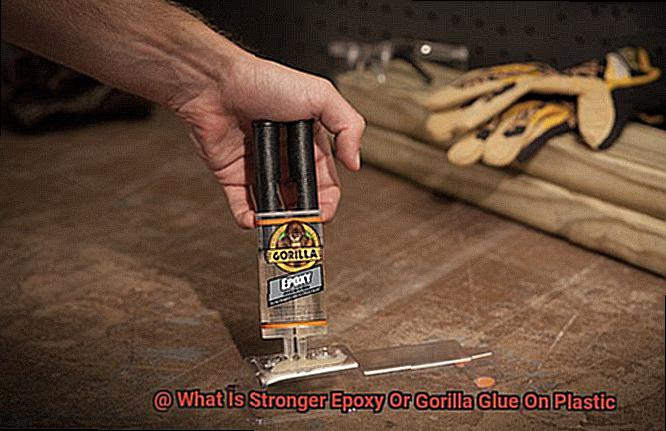
Fourthly, curing time significantly influences bond strength. A longer curing time results in a stronger bond. However, following manufacturer’s instructions regarding curing time is essential as some adhesives may become brittle if left to cure for too long.
Lastly, temperature is another crucial factor affecting bond strength. Some adhesives like epoxy require specific temperature ranges for optimal bonding strength. While higher temperatures can speed up curing times, they may also weaken adhesive bonds over time.
Application Methods for Epoxy and Gorilla Glue
Well, say goodbye to those days because we’re about to dive into the world of epoxy and Gorilla Glue application methods.
Epoxy is a two-part adhesive that requires mixing before use. Once mixed, it starts to harden within minutes, so it’s important to be quick in applying it to the desired area. When using epoxy, make sure to distribute it evenly while fully saturating the areas being glued. This ensures a strong bond that can withstand even the toughest challenges.
Gorilla Glue, on the other hand, is a one-part adhesive that activates with moisture. Before application, dampen the surfaces being glued to ensure maximum effectiveness. Keep in mind that Gorilla Glue expands as it dries, so use only a minimal amount and clamp the surfaces together tightly to prevent excess glue from seeping out.
It’s important to follow the manufacturer’s instructions when using either adhesive. Gloves and protective eyewear may be necessary since both adhesives can be difficult to remove from skin and eyes. Proper ventilation is also recommended when applying either glue since fumes may be released during the process.
But which adhesive is stronger for plastic? The answer depends on the type of plastic and the specific application itself. It’s always best to test a small area before committing to a full application to ensure the best results.
Best Uses for Each Adhesive
Adhesives can be a game-changer when it comes to repairing plastic items. However, choosing the right adhesive for the job is crucial. In this article, we’ll delve into the best uses for two popular adhesives: epoxy and Gorilla Glue.
Firstly, let’s explore epoxy. This two-part adhesive is known for its strong bonding capabilities and ability to fill gaps and cracks in surfaces. It’s perfect for bonding plastics that will be subjected to stress or tension, as it has excellent resistance to impact and shock. Additionally, it’s highly resistant to moisture, chemicals, and heat, making it a great option for industrial or automotive applications. Keep in mind that epoxy requires mixing before use and can take anywhere from 5 minutes to 24 hours to fully cure depending on the type of epoxy used.
Next up, we have Gorilla Glue. This one-part adhesive is ideal for bonding plastics that are not under stress or tension. It expands as it dries, filling in any gaps or spaces between surfaces. It bonds quickly and can be sanded or painted over once dry. Gorilla Glue also has excellent resistance to moisture, making it a great option for outdoor applications such as repairing garden tools or outdoor furniture.
When choosing an adhesive, always remember that not all adhesives are created equal. Here are some sub-topics to keep in mind:
- Type of Plastic – Different types of plastic require different types of adhesives.
- Surface Preparation – Always ensure the surface is clean and free of debris before applying adhesive.
- Curing Time – Consider the time required for the adhesive to cure completely.
- Application Method – Follow the manufacturer’s instructions for best results.
GUf5yA46qjA” >
Also Read: Does Gorilla Glue Work on Plastic?
Conclusion
After careful consideration, it’s clear that both epoxy and Gorilla Glue have their unique benefits when it comes to bonding plastic. Epoxy is a powerhouse in terms of strength and durability, making it an excellent choice for rigid plastics such as PVC or ABS in high-stress applications. Meanwhile, Gorilla Glue is perfect for flexible plastics like polypropylene or polyethylene in low-stress situations where time is of the essence.
But don’t forget about the other factors that can impact the bond’s strength, including surface preparation, adhesive selection, curing time, temperature, and type of plastic used. Taking these into account before selecting an adhesive ensures optimal results.
Epoxy stands out with its superior bonding strength and versatility on a wide range of materials. Plus, its resistance to water, chemicals, and heat make it ideal for various applications where these factors are crucial. It even fills gaps and cracks in plastic surfaces seamlessly.
On the other hand, Gorilla Glue offers versatility and water-resistance by bonding not only plastic but also wood, metal, ceramic and more. Its expanding nature during curing ensures a tight hold even on uneven surfaces while quick assembly reduces waiting times for glue to set.
To sum up: understanding each adhesive’s strengths allows you to choose the right one for your specific project needs. Always follow proper application methods along with protective gear when necessary.

